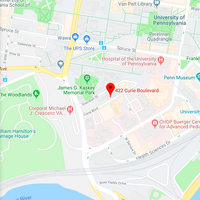Current Research at the O'Doherty Lab
Description of Research:
Highly active anti-retroviral therapy can clear the blood of HIV-1 virions. But, despite long-term suppression of virus, when the drugs are stopped the virus returns. Thus, reservoirs of latent, treatment-resistant HIV-1 exist in infected individuals and are a major barrier to cure. With the advent of ART, the challenge in the field of HIV is to clear the remaining reservoir. The challenge is significant because it is very difficult to measure the reservoir since the reservoir is very small - less than 1 in a million CD4+ T cells are true HIV reservoir cells. Moreover, identifying the true reservoir is made more difficult because it is hidden among many defective or damaged pieces of HIV that are inserted into the human chromosome.
Current belief is that the HIV reservoir may persist because it is invisible. If HIV is integrated in the human chromosome and it is never expressed, the integration event could have a minimal effect on cell turnover. Our work suggests on the contrary that the reservoir is highly dynamic with contraction and expansion forces exerted on the reservoir simultaneously consistent with significant HIV reservoir expression. Our overarching hypothesis is that significant HIV reservoir expression occurs. This expression can lead to reservoir contraction when the immune system works, but can also lead to reservoir expansion by inducing cell division through a mysterious process that may involve splicing of HIV to other human genes. This finding suggests we should be more optimistic about cure of HIV as previously the reservoir appeared to be stable and difficult to perturb.
To study the forces exerted on the HIV reservoirs we use an in vitro model that we developed and characterized. This model mimics many important aspects of HIV in vivo. This allows us to probe the important differences between the latent and productive states of HIV infection. We also culture patient cells Ex-vivo to further model the latent and productive states.
Rotation Projects
1. Characterize reservoir dynamics in different cellular subsets and different patient populations
2. Characterize the role of various immune effectors on the reservoir
3. Probe the mechanistic differences between latent and productive HIV Infection.


